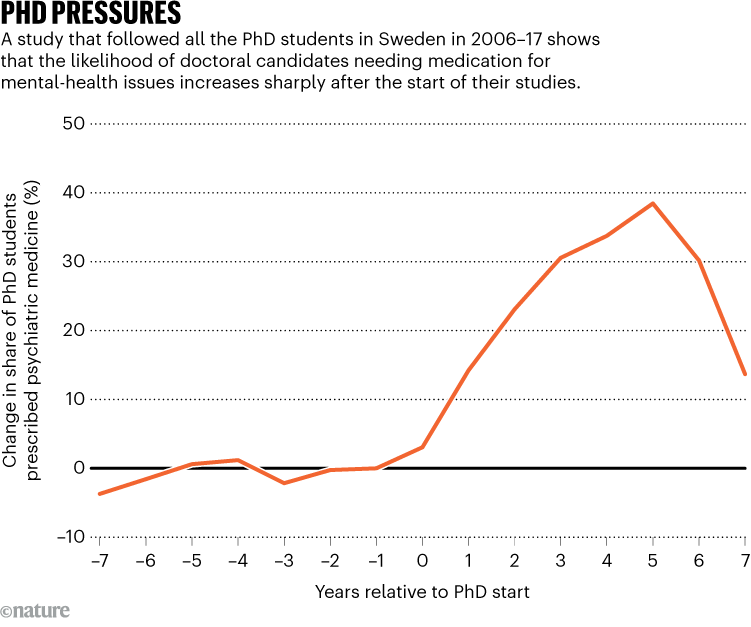Hello Nature readers, would you like to get this Briefing in your inbox free every day? Sign up here.

Credit: Petr Horalek/Astronomy Photographer of the Year
Bioluminescent plankton emit an otherworldly glow under the stars of the Southern Cross constellation in this image taken by astrophotographer Petr Horálek in the Maldives. “As you walked on the beach, the plankton lit up like small torches, stuck to your legs and feet,” he said in his entry for the Astronomy Photographer of the Year competition. “You could swim in the lagoon and see your movements illuminated by the plankton in the water. When a new wave hit the shore, it looked like blue lava.”
See more of the month’s sharpest science shots, selected by Nature’s photo team.
Nine people have died in an outbreak of Marburg virus, a highly deadly relative of Ebola virus, in Rwanda. There are no approved treatments or vaccines for Marburg; nevertheless most outbreaks are small and quickly contained. If the Rwanda outbreak continues, the plan is to trial at least one experimental vaccine in a strategy known as ring vaccination, which involves immunizing contacts of an infected individual. “The Rwandan health authorities are exceptionally capable, and I hope that they will be able to rapidly contain this outbreak,” says Mark Feinberg of the vaccine-research non-profit IAVI. “The risks of extension of the outbreak to adjacent countries is not insignificant and the consequences of this could be severe.”
A new large language model (LLM) from the developer of ChatGPT, called OpenAI o1, has impressed researchers with its science knowledge. Scientists who tested a preview version of the model noted that it spent more time in certain stages of learning, and ‘thinks’ about its answers for longer, making it slower, but more capable. The crowning achievement of o1 was beating PhD-level scholars on the hardest series of questions in a test called the Graduate-Level Google-Proof Q&A Benchmark, making it the first LLM to do so. However, testers also noted that o1 seems to make up incorrect answers more often than its predecessors.
The longer someone continues their doctoral studies, the more they need access to mental-health services and medicines such as antidepressants and sedatives. A study of more than 20,000 Swedish PhD students found that, by their fifth year of study, PhD candidates were 40% more likely to be prescribed psychiatric medication compared with the year before they started studying. After the average length of a PhD, their uptake of mental-health services by students drops again.
Reference: SSRN preprint (not peer reviewed)

Source: Ref. 1
Features & opinion
People with Alzheimer’s disease are trying a therapy that involves rhythmic clicking and flashing lights, tuned to repeat 40 times a second. Clinical trials started after scientists observed that the brains of people with Alzheimer’s are deficient in ‘gamma waves’ — electrical patterns that oscillate at around 40 hertz — compared with healthy brains. In mice, rhythmic visual and auditory cues seem to act like the drum major of a marching band, getting gamma waves in tune again, with positive effects on cognition and brain health. For some critics, this all seems too good to be true — and hype has ignited an explosion of unproven ‘wellness’ gadgets linked to the idea.
Reference: PNAS paper & Nature paper
One year ago, biogeochemist Maya Bhatia lost her life when she was swept into a moulin — a vertical shaft — while collecting samples on a slippery glacier. Tragedies such as this are part of why environmental scientist Sarah Boon is calling for in-depth safety courses for those undertaking fieldwork in remote, hazardous environments such as the Arctic. Supervisors should also have leadership training for emergency situations, and researchers who are too tired or stressed to operate safely should be supported, argues Boon.
Artificial intelligence (AI) can help to stop natural hazards such as storms and floods from becoming human disasters. AI tools can help to make faster and more accurate weather forecasts, expand access to early-warning systems and keep infrastructure such as telecommunications up and running. But such tools could also suffer from bias, for example because they tend to be trained largely on data from wealthier countries, and a lack of interoperability. Twelve contributors to an analysis of AI applications in disaster prediction and mitigation call for the development of international standards and more transparency from AI developers.
The Global Initiative on Resilience to Natural Hazards through AI Solutions, led by the International Telecommunication Union, will kick off in November. To get involved, specialists in AI and in disaster management are invited to contact the focus group and initiative’s secretariat at [email protected].
Image of the week

Astronauts are one step closer to being able to print metal tools and spare parts in space. In August, a 3D printer aboard the International Space Station squirted out some cylindrical stainless-steel test specimens — the first-ever metal things successfully 3D printed in space. These will be compared with samples produced on Earth to see what weirdness might have occurred in microgravity. (VoxelMatters | 7 min read) (Airbus/ESA)
Don’t try this at home: researchers have discovered a tree frog that, during its entire tadpole phase, doesn’t poop. This uncomfortable-sounding ability evolved, suggest scientists, because the little fellas spend their whole childhoods in tiny pools of water trapped in the hollows of plants.
Don’t hold in your opinion on this newsletter. Please send your feedback to [email protected].
Thanks for reading,
Flora Graham, senior editor, Nature Briefing
With contributions by Jacob Smith and Sarah Tomlin
Want more? Sign up to our other free Nature Briefing newsletters:
• Nature Briefing: Careers — insights, advice and award-winning journalism to help you optimize your working life
• Nature Briefing: Microbiology — the most abundant living entities on our planet — microorganisms — and the role they play in health, the environment and food systems.
• Nature Briefing: Anthropocene — climate change, biodiversity, sustainability and geoengineering
• Nature Briefing: AI & Robotics — 100% written by humans, of course
• Nature Briefing: Cancer — a weekly newsletter written with cancer researchers in mind
• Nature Briefing: Translational Research — covers biotechnology, drug discovery and pharma


